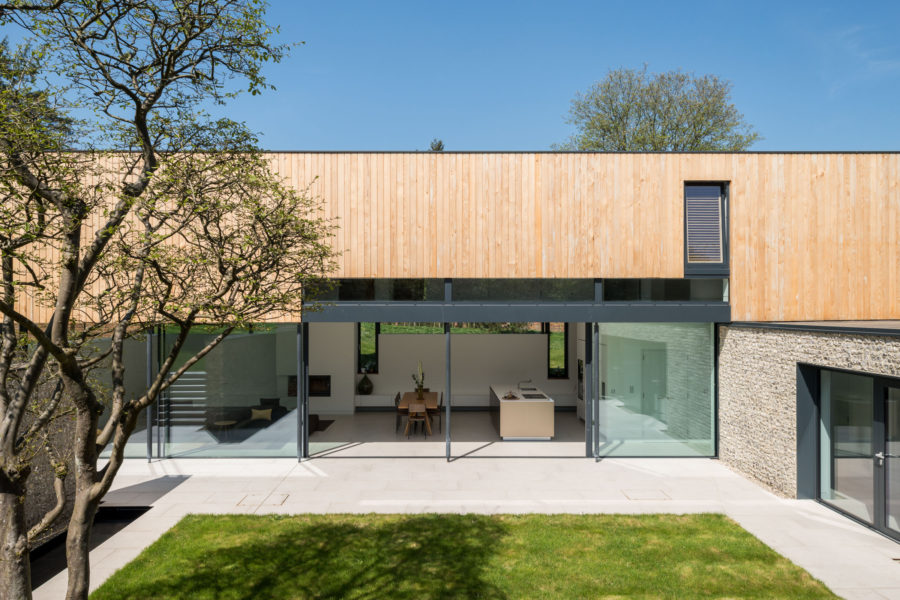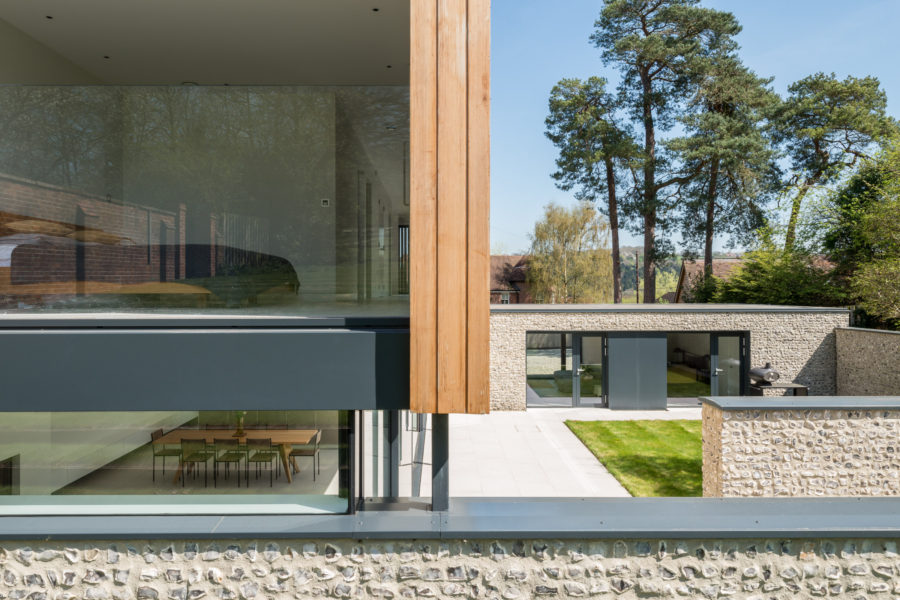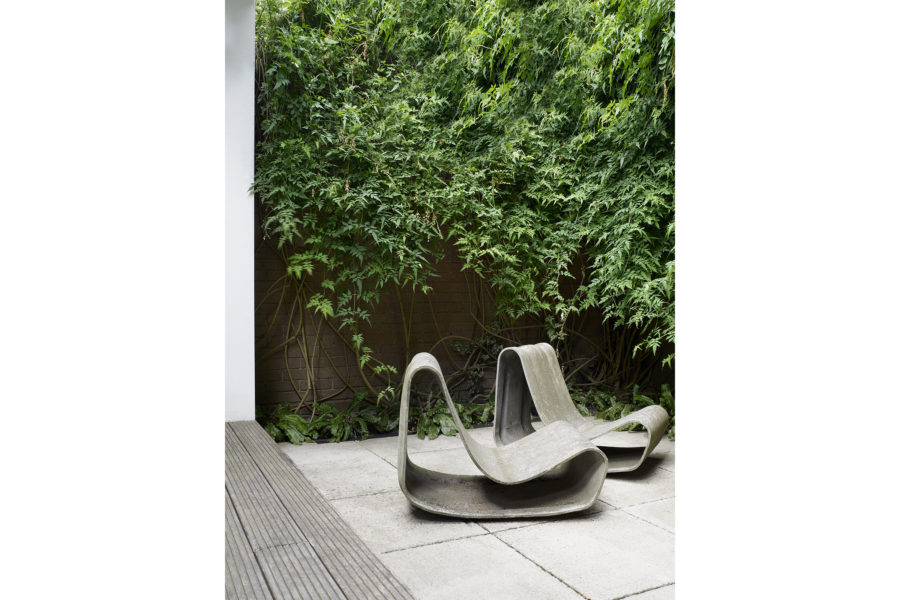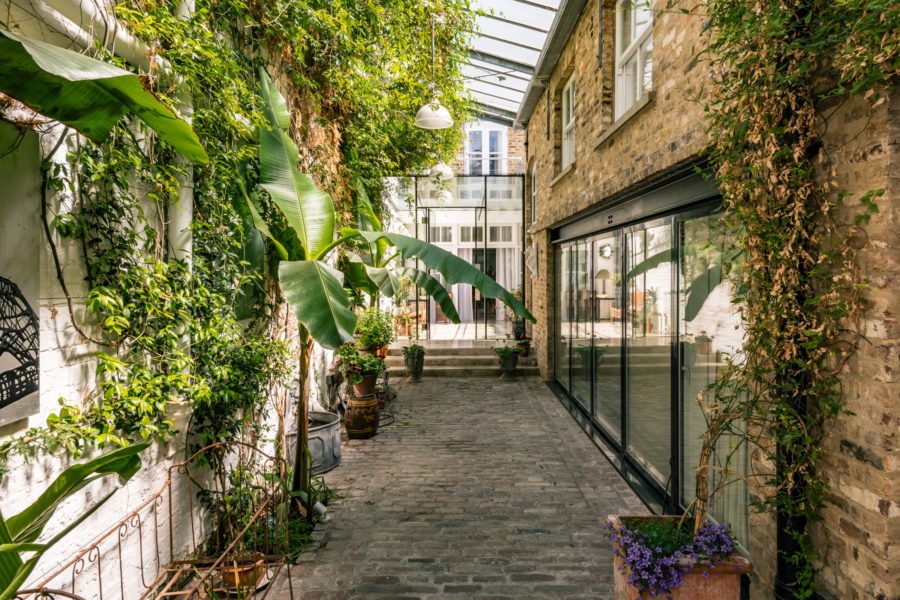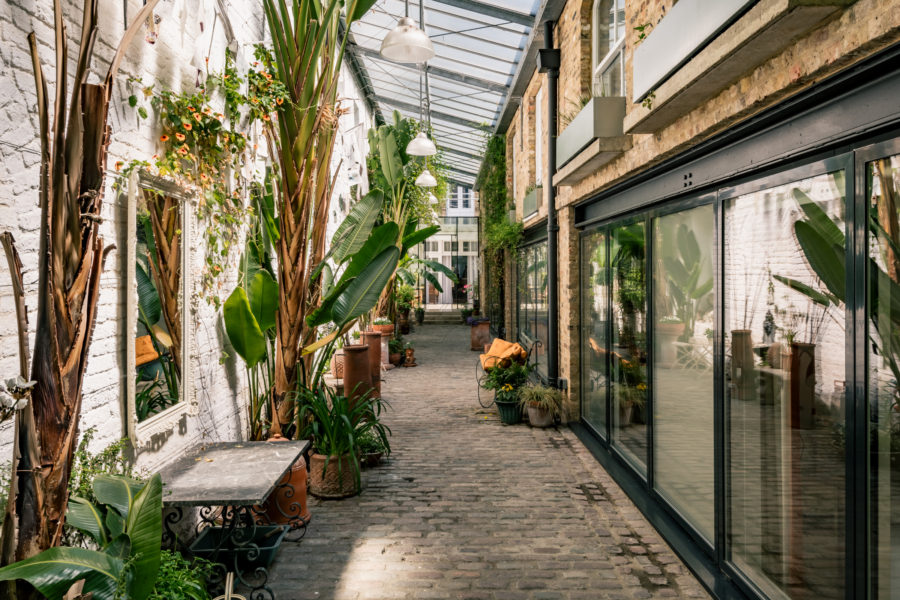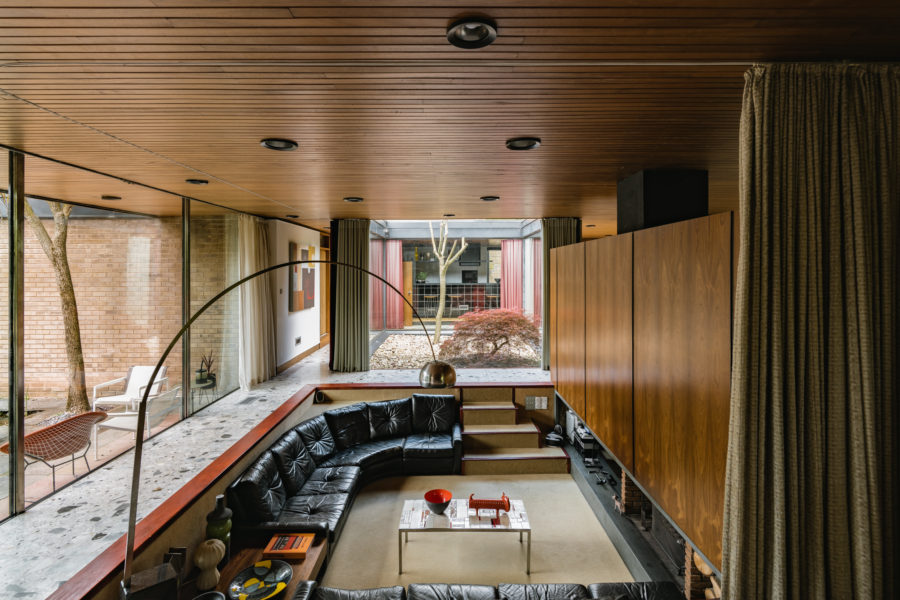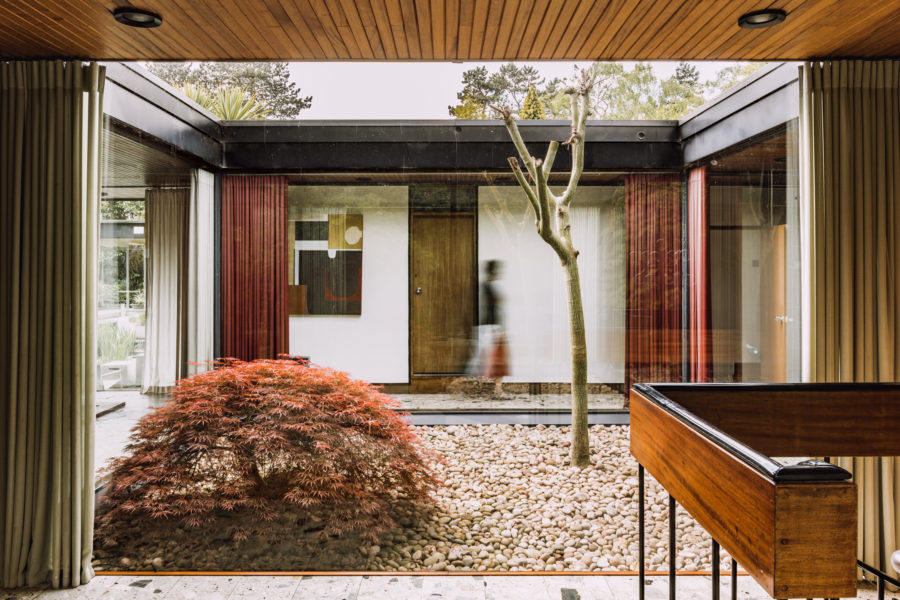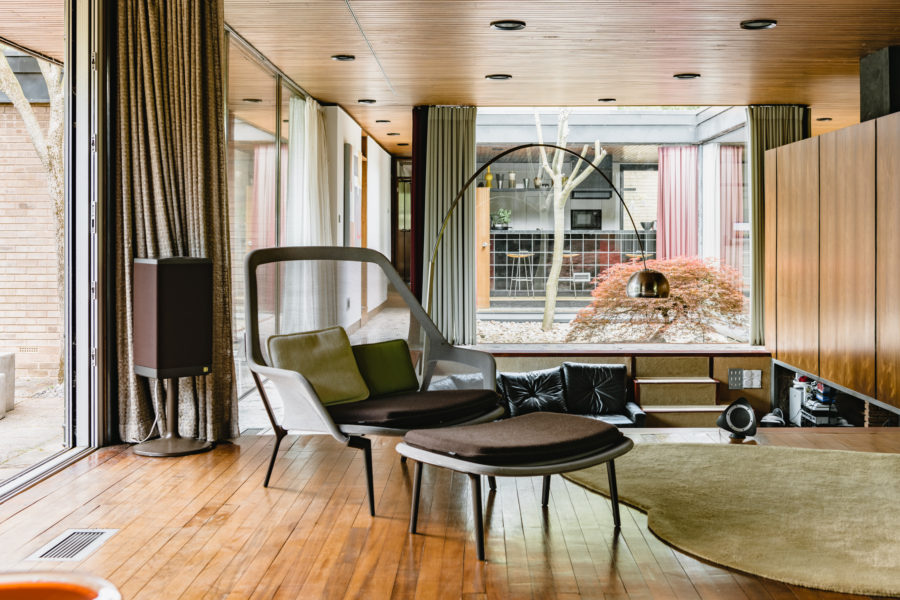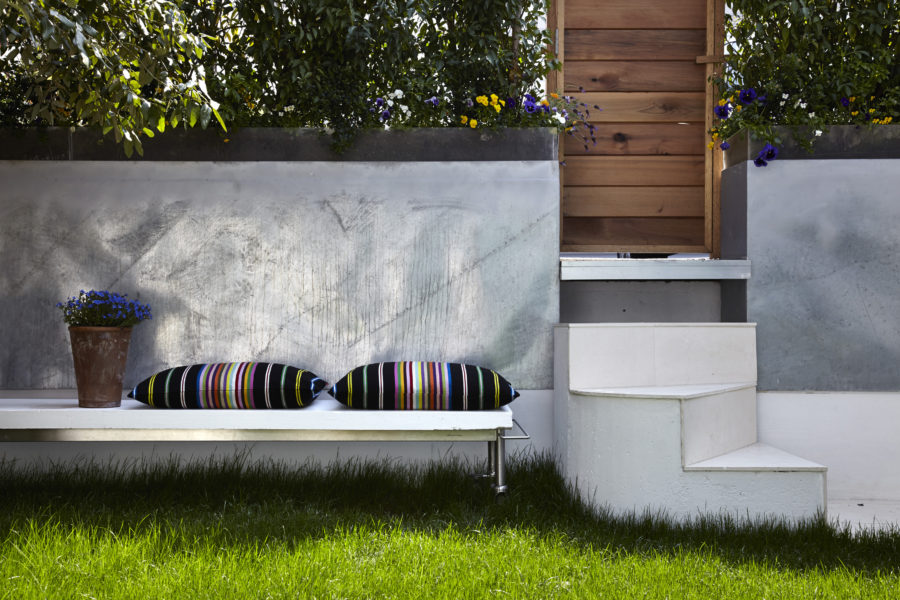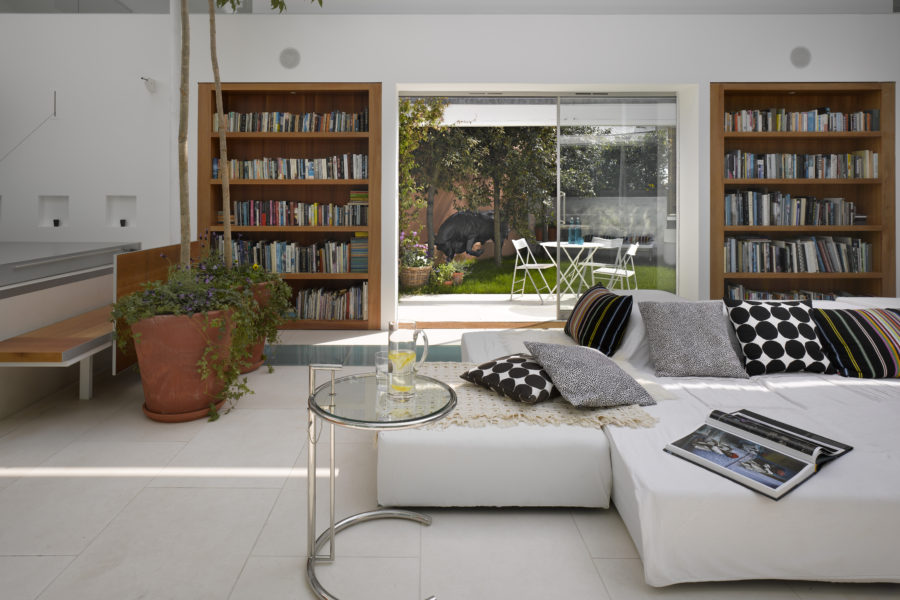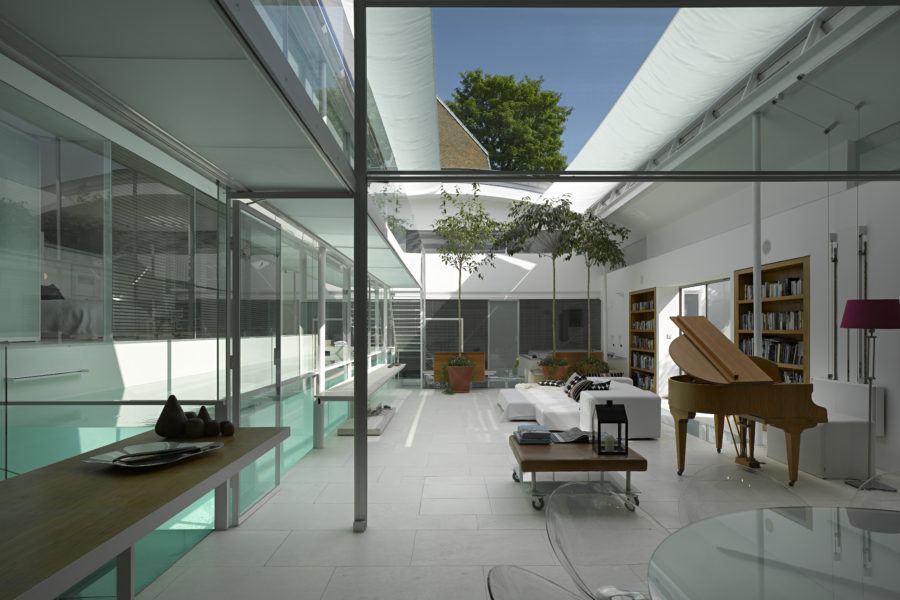Square Deal: home courtyard inspiration, part two

The courtyard house typology is a millennia-old arrangement that brings light, nature and a sense of openness into the heart of a home. Here, in part two of our run-down on home courtyard inspiration, we share five modern takes on this enduring layout. Be sure to check out part one here.
Cheeran House, Berkshire
Unlike other residential courtyards, which are a feature to be discovered within a home, Cheeran House was built to be partially concealed in its own sunken, walled enclave and surrounded by meadow banks.
This cocooning effect nestles the John Pardey-designed house in its environment and also provides shelter from the elements. The cedar and flint-walled house received two RIBA awards and we can’t help but think one of the standout reasons was the seamless flow from indoor to outdoor space, making it the perfect usable outdoor room.
Walter Segal’s House, London N6
The Modernist Walter Segal house in Highgate was designed by the architect for himself and his family and completed in 1964. Created as a private retreat, the home is set back from the road and its unassuming frontage cloaks a calming grey bricked, pine-panelled space that has been sensitively stripped back and sagaciously restored.
The original Segal-era sliding glass windows beckon the outside world in, from the 126-foot expanse of garden to the simple yet effective courtyard planted with Jasmine.
St Stephen’s Yard, London W2
Not all courtyards are created equal and this cobbled courtyard garden stretches the entire 30-metre length of this home on Chepstow Road. With a sloping glass roof and walls on either side, the space is part walkway part botanic glasshouse filled with an array of tropical and native plants. The former horse stable now affords the most serene, foliage-filled outlook from any of its bedroom windows – and for a W2 home, what could be better than that?
David Shelley’s Coward House, Nottingham
This mid-century masterpiece was designed in the 1970s by David Shelley. The steel-framed Case Study-esque structure is currently home to Monica and Simon Siegel who, as conscious custodians of the Nottingham house, have sensitively restored its elements, including putting window frames back to their intended colours and design.
Original features include a sunken conversation pit, swimming pool, terrazzo floors and a courtyard garden. Floor-to-ceiling windows on four sides create a box-framed view of a Japanese Maple tree, bringing light into the interior corridor and study whilst inspiring a tranquil state of mind.
Gayton Road, London NW3
The award-winning architecture practice Paxton Locher designed notable public spaces in London including the Jerwood Space and the Soho Theatre. Yet, it is their private residences that really capture imaginations – the late Richard Paxton and his wife Heidi Locher’s trademark move was to draw natural light into their spaces from above, focusing the gaze upwards to the sky.
Gayton Road is no exception, with its retractable roof above a glass-walled courtyard. The awe-inspiring 40-foot double-volume room reflects the light across stark white flooring and walls, illuminating the adjoining custom-made glass swimming pool in vivid turquoise.



